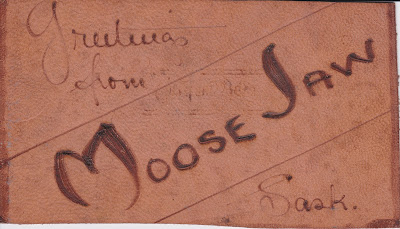Yaquina Bay Lighthouse, Oregon, ca 1871
The photograph on this postcard comes from the Newport Historical Society of Oregon and is dated about 1871. The card was published by Natural Design Photography of Medford, Oregon and purchased from a gift shop. Built in 1870 by Ben Simpson, the Yaquina Bay Lighthouse was only in operation for 3 years before the Yaquina Head Lighthouse, 3 miles north, replaced it in 1873. It was officially decommissioned in 1874. The fifth-order Fresnel lens was then moved and installed in the Yerba Buena Lighthouse in California in 1875.
We visited several lighthouses on the return trip from the Redwood National & State Parks. All the other lighthouses in Oregon have a separate building for living quarters; however, this one is a four-bedroom house with a light tower. The keeper and his family lived in the house during the three years it was in operation. It may also be the only lighthouse that is supposed to be haunted. A young woman named Muriel, mysteriously died there in 1875 and is said to haunt the building.
From 1888 to 1896 the United States Army Corps of Engineers used the lighthouse as living quarters while they built the North and South Jetties at the mouth of Yaquina Bay. Later, from 1906 to 1915, the United States Coast Guard used the lighthouse as a lookout and living quarters before moving to more central quarters overlooking Newport bay.
The tower and lighthouse as seen from the visitors parking lot
During the time the Coast Guard used the facility they built an eight-story steel observation tower that still exists next to the lighthouse. The Oregon Highway Division purchased the property around the lighthouse and established a state park that included the lighthouse, the observation tower, and several acres of surrounding land.
By 1946 the lighthouse was in a dilapidated condition and due to be demolished; however, the newly formed Lincoln County Historical Society managed to save it by raising enough funds to delay the demolition. It was slated for demolition again in 1951 but the efforts of L.E. Warford of the Historical Society led to the lighthouse being recognized as a historical site. It was a county museum until 1970. Ownership was transferred to the Oregon Parks and Recreation Department in 1974. Today the restored lighthouse is open for public viewing and has daily tours.
The outside of the lighthouse as it looks today
The French physicist, Augustin-Jean Fresnel developed a special type of compact lens for lighthouses. Fresnel lenses are thinner than a conventional lens and can also capture more light from the source making the light visible over greater distances. In 1823 the first Fresnel lens was used in the Cordouan lighthouse located at the mouth of the Gironde estuary in France and could be seen a distance of 20 miles or 32 kilometers away. A fifth order Fresnel lens, such as the one used at Yaquina Bay, would not have been as powerful.
For additional information, see:
https://en.wikipedia.org/wiki/Yaquina_Bay_Light
https://en.wikipedia.org/wiki/Fresnel_lens



































































